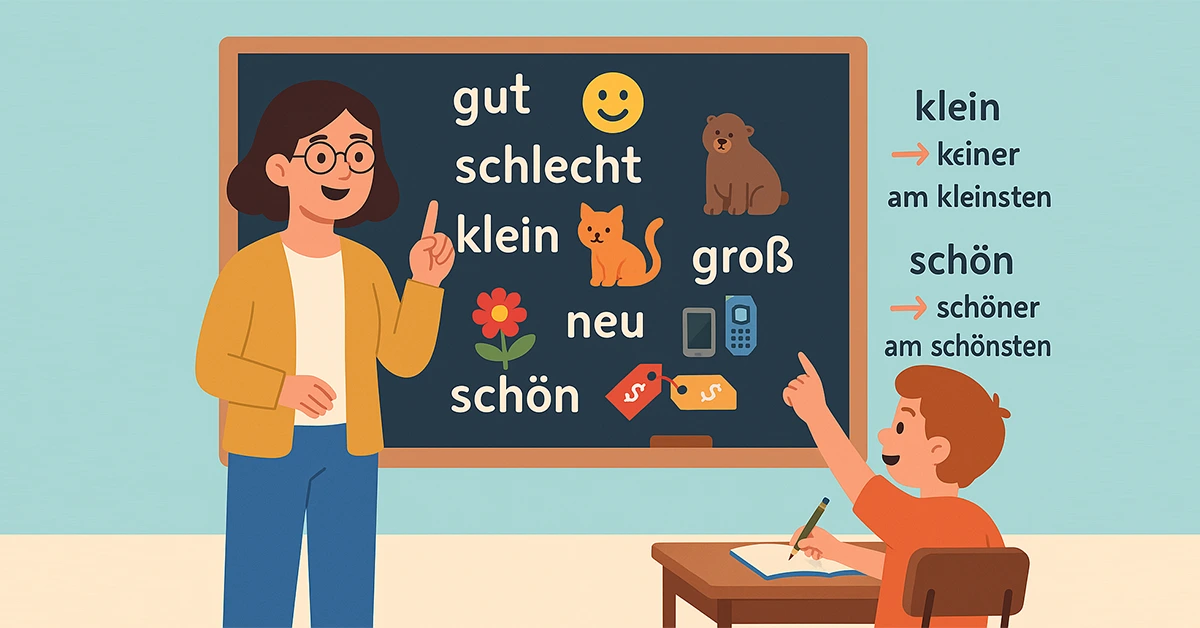German Adjectives – How to Describe People and Things

Learn essential German adjectives to describe objects, people, and situations. Discover how adjectives work with nouns and change based on case and gender.
Why Learn German Adjectives?
Adjectives make your sentences more colorful and precise. They help you describe the world around you and express opinions or emotions.
Common German Adjectives
- gut – good
- schlecht – bad
- klein – small
- groß – big
- neu – new
- alt – old
- schön – beautiful
- teuer – expensive
- billig – cheap
How Do Adjective Endings Work in German?
Adjectives in German change depending on the article, gender, and case of the noun. Here’s a quick overview:
- der kleine Hund – the small dog (masculine, nominative)
- die schöne Blume – the beautiful flower (feminine, nominative)
- ein altes Auto – an old car (neuter, nominative)
Comparatives and Superlatives
- klein – kleiner – am kleinsten (small – smaller – smallest)
- schnell – schneller – am schnellsten (fast – faster – fastest)
- schön – schöner – am schönsten (beautiful – more beautiful – most beautiful)
Tips to Practice Adjectives Effectively
- Label objects around you with adjectives
- Practice describing pictures
- Write short descriptions of people or things